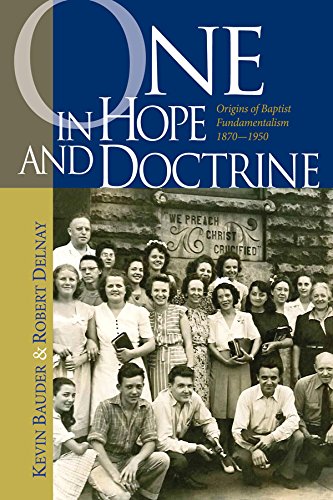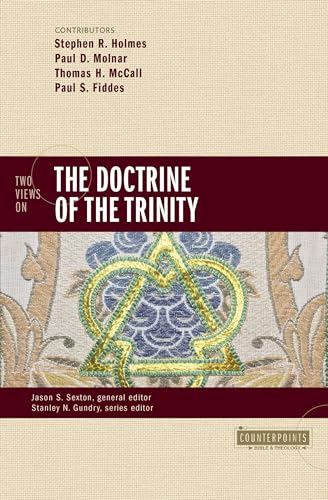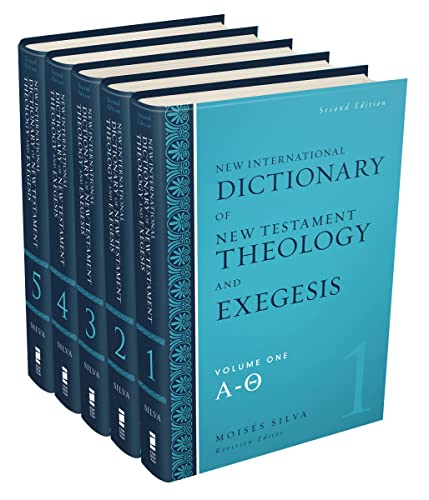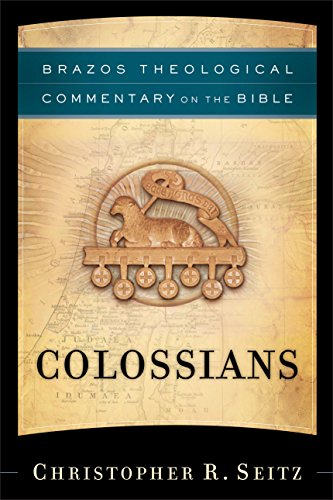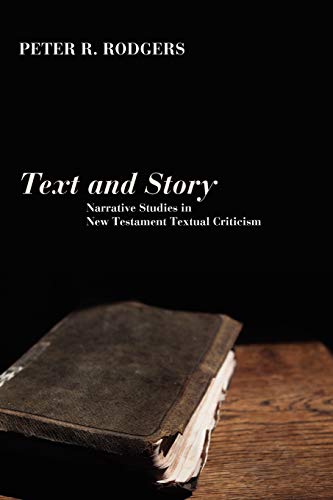One in Hope and Doctrine: Origins of Baptist Fundamentalism, 1870–1950
Written by Kevin Bauder and Robert Delnay Reviewed By Nathan A. FinnEver since Baptist journalist Curtis Lee Laws coined the term “fundamentalist” in 1920, Baptists have enjoyed significant representation within American fundamentalism. With the exception of the Presbyterian trio of William Jennings Bryan, J. Gresham Machen, and Carl McIntire, nearly all of the best-known fundamentalist personalities have been Baptists. In One in Hope and Doctrine, Kevin Bauder and Robert Delnay offer a narrative history of Baptist fundamentalism through the mid-twentieth century. They intend their book to be the first of two volumes on this topic.
The major contours of the authors’ story will be familiar to historians of American fundamentalism. By the late-1910s, Northern Baptists were divided into three broad camps: 1) revisionist, progressive modernists; 2) dissenting, traditionalist fundamentalists; 3) denominationalist moderates, who were more pietistic and hesitant to dissent against progressive trends. Denominational conflict ensued in the 1920s and 1930s, resulting in substantial losses for the fundamentalists as modernists and moderates joined cause against conservative dissenters. The public ignominy of the Scopes Trial (1925) further inhibited the fundamentalist cause. The Northern Baptist Convention came firmly under the control of modernists and their moderate allies, becoming part of the Protestant Mainline, while fundamentalist Baptists retreated into their own subculture and established groups like the General Association of Regular Baptist Church (GARBC, est. 1932) and, later, the Conservative Baptist Association (est. 1947).
One in Hope in Doctrine is a work of “insider” history written by and mostly for fundamentalists. In this, the authors follow in the tradition of previous works by fundamentalist historians George Dollar and David Beale. As they state in their preface, Bauder and Delnay are not attempting to write a critical scholarly history of Baptist fundamentalism; they intend their work to be both informative and edifying. There is virtually no attempt at historical contextualization—this is a story about doctrine, spirituality, and evangelism. The authors assume the virtues of fundamentalism, so they do not hesitate to make spiritual pronouncements about their subjects, including questioning the motives of modernists and the controversial fundamentalist J. Frank Norris.
Though Bauder and Delnay evidence awareness of scholarly studies of fundamentalism, they do not engage with critical secondary sources or attempt to organize their own narrative around a central theme. Nevertheless, their implied theme is fundamentalist faithfulness in the wake of modernist apostasy and moderate compromise. Most of their narrative focuses upon the North, which makes sense in a book that focuses upon pre-1950 Baptist fundamentalism. (They do discuss leading southern fundamentalists Norris and John R. Rice; these men had transnational influence.) Though the authors discuss several varieties of Baptist fundamentalism, they seem to at least imply that the best approach is exemplified by the GARBC; it is surely not coincidental that Regular Baptist Press published this book.
Though One in Hope and Doctrine is not a scholarly work, historians of fundamentalism and Baptist studies will find much to appreciate. Like many works of insider history, this book highlights some lesser-known figures who made significant contributions that have not often been appreciated by scholars outside the movement. For example, historians have given little attention to GARBC leader Robert Ketcham and have totally ignored northern fundamentalist pioneer Oliver Van Odsel; these men are arguably the two most important figures in the authors’ narrative. Bauder and Delnay also draw out all sorts of details and anecdotes that are absent from more critical studies. While this can be cumbersome at times, these details provide “color” that is often missing from more scholarly accounts of Baptist fundamentalism.
Non-fundamentalist historians have sometimes downplayed or even ignored the tensions between Regular Baptists and “conference fundamentalists” who remained in the Northern Baptist Convention after 1932; these tensions constitute a major theme in this book. The authors’ typology of Baptist fundamentalism, while perhaps impressionistic, provides helpful nuance for scholars interested in the topic. The discussion of Norris’s career among fundamentalists in the North is a welcomed contribution, since most scholarly studies focus almost exclusively upon his relationship with Southern Baptists. Their argument that modernists formed the Northern Baptist Convention to promote their agenda deserves closer investigation by non-fundamentalist historians.
Fundamentalists, especially in the GARBC, will appreciate a winsome narrative that recounts so much of their past. Conservative Baptists will likely not appreciate the implication that the GARBC was more faithful than the denominational fundamentalists who tried—ultimately in vain—to reform the Northern Baptist Convention. Some southern fundamentalists might feel they receive inadequate treatment and/or question the implicit methodology of interpreting southern fundamentalist through the lens of their northern coreligionists. Non-fundamentalist historians of American Christianity will not resonate with the simplistic and apologetic narrative, but many will appreciate the way One in Hope and Doctrine brings to light many figures, stories, and controversies that have heretofore been relegated to unpublished dissertations written at fundamentalist institutions or buried away in obscure archival holdings.
After 1950, the nature of fundamentalism changed. Independent Baptists became more prominent, the battles with the “new” evangelicals took center stage, and fundamentalists fought each other over secondary separation and the King James Only position. Fundamentalism also took on a more “southern” feel, largely through the influence of periodicals like Sword of the Lord and institutions such as Bob Jones University. Fundamentalists and many historians will look forward to seeing how Bauder and Delnay tell those stories in their forthcoming second volume.
Nathan A. Finn
Nathan A. Finn (PhD, Southeastern Baptist Theological Seminary) serves as provost and dean of the university faculty at North Greenville University. He is co-editor of the forthcoming volume Historical Theology for the Church (B&H Academic, 2021).
Other Articles in this Issue
The account of Abraham's near-sacrifice of Isaac has been and will likely continue to be violently applied so long as the dominant misunderstanding of the text prevails...
In recent years, a growing cadre of younger historians has begun publishing significant books on the history of American evangelicalism...
Romans 4 remains a central text in the debate over the New Perspective on Paul...
Within the intra-Reformed debate over baptism, covenant theology is a crucial aspect in determining one's position...
‘Fathers of Faith, My Fathers Now!’: On Abraham, Covenant, and the Theology of Paedobaptism
by David GibsonThe figure of Abraham creates a covenantal framework for biblical theology that allows baptism to be considered in relation to the Bible's developing story line...


